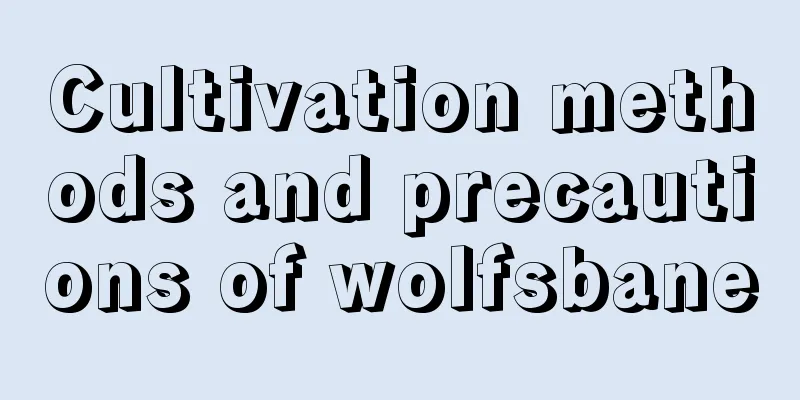Cultivation methods and precautions of wolfsbane

1. Maintenance methods1. Temperature: It can withstand both low and high temperatures, and has basically no requirements for maintenance temperature. It can be planted regardless of the north or south of my country. 2. Watering: Unless there is drought, there is no need to water it because it is drought-resistant. If the drought lasts for more than one month, it will need to be watered artificially, generally once a week, until the soil is completely wet. 3. Fertilization: It is tolerant to barrenness and does not require high nutrients, but this does not mean that it does not need topdressing. In order to promote growth, it is best to fertilize it once a month. You can use farmyard manure or nutrient-rich compound fertilizer. It should be noted that thin fertilizer should be used, otherwise it is easy to cause fertilizer damage. 4. Light: It can accept strong light environment or semi-shade environment, so you don’t have to worry too much about light issues during maintenance, just raise it normally. 2. Breeding techniques1. Reproduction: It can be propagated by root division. First, you need to take out the underground rhizomes, and then cut them into small sections of ten centimeters for reproduction. What needs to be noted is that the incision needs to be disinfected before planting to avoid diseases and pests. 2. Pruning: Generally, it does not require pruning. You only need to prune away the dry and rotten branches. 3. Problem Diagnosis1. Pests: It is highly toxic and basically has no pests. 2. Pathology: If the branches and leaves turn yellow, it is mostly caused by improper watering. If there is water accumulation in the soil, you need to control the water temporarily and wait until the accumulated water in the soil is completely dry before watering it again. If it is caused by too little watering, you need to water it, but don't water too much at one time. Just water it until the soil is completely moist. IV. Other issues1. Edibility: It is not edible. 2. Toxicity: Its rhizomes contain a large amount of toxins and must not be eaten. The more developed its root system is, the more toxic it is. For example, if the roots of other plants grow together with its roots, it will be difficult for other plants to survive. If you accidentally eat it, you need to drink plenty of water to dilute the venom, otherwise it will cause diarrhea. |
<<: Cowpea cultivation methods and precautions
>>: Cultivation methods and precautions of edamame
Recommend
How to grow bellflower
1. Soil Choose loose, fertile soil, and you can m...
How to propagate the maidenhair fern? Common propagation methods
How to reproduce the maidenhair fern When the mai...
How to grow roses
1. Breeding environment (1) Soil: The main requir...
Jackfruit planting conditions and methods
Jackfruit is a common tropical fruit , crisp and ...
How to propagate cinnamon
1. Pressing branches 1. If you want to use this m...
How many years does it take for potted oranges to bear fruit?
Introduction to planting potted oranges The growt...
How to distinguish between Huayueye, Moonlight Goddess and Chihuahua
Identification method The center of the Moonlight...
How to manage eggplant in summer?
Growing eggplant in the summer is essential to me...
How to grow white peony
1. Maintenance conditions 1. Soil: When breeding,...
What is the role of lettuce
The ornamental effect of lettuce In many areas of...
How often should I water my chrysanthemum?
How often should I water my chrysanthemum? Genera...
How to make wine from blueberries
Select Materials Here we take 1kg of blueberries ...
How to pollinate passion fruit (self-pollination and artificial pollination)
1. Self-pollination The passion fruit flower is s...
How to breed golden marbles
Seed propagation Generally in March and April, pi...
The difference between chrysanthemum and chrysanthemum
1. Leaf Difference The leaves of Chrysanthemum ar...









